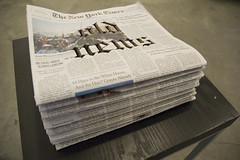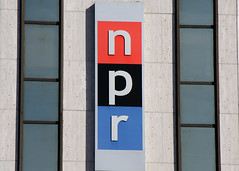
Twitter is changing the media landscape and has changed the way journalists are doing their jobs. I made my Twitter account over a year ago, unwillingly. I heard about the site and was told journalists were using it more and more. As an aspiring journalist I figured I should see what it was all about. At first I wasn’t sure how to use it. I attended a social media workshop at a Society of Professional Journalists conference in NYC, taught by Sree Sreenivasan, a professor at Columbia’s Journalism School.
He talked about the proper way to use Twitter and gave some guidelines. I took points away that I thought were important; such as only one in every five tweets should be about you and reach out to other users (retweet and mention).
After I had a better understanding of the site, I became addicted to the real-time news updates. While having my account, I have seen many others who have used the site well, and others who do not.
Journalists rarely make their tweets private, and sometimes what they tweet can cause controversy. In February 2011 it was reported that CBS News chief foreign correspondent Lara Logan had been beaten and sexually assaulted while covering the Egyptian uprising. Nir Rosen, a journalist who held a position at New York University, tweeted negatively about the incident.
Rosen tweeted Logan was trying to outdo CNN’s Anderson Cooper who was punched in the face during the uprising. He also tweeted, “i apologize for being insensitive, its always wrong, that’s obvious, but i’m rolling my eyes at all the attention she will get.” Rosen resigned from his position and his comments were condoned by NYU. He apologized on Cooper’s show saying, “I was a jerk and I was being thoughtless.” Watch reporters discuss the controversy here.
Journalists should also make sure their tweets are accurate as well as timely. For example, during the media frenzy that occurred when the news broke about Osama bin Laden’s death; MSNBC reporter Norah O'Donnell tweeted "Obama shot and killed," citing her source as Jim Miklaszewski, NBC Chief Pentagon Correspondent. Spell check and auto correct can make changes automatically, which can be overlooked. Double checking one’s tweet only takes an extra minute, and can make a world of difference; especially today when instant news is in high demand.
Fact checking is also an important step. Journalists regularly fact check for stories, and they should follow this practice for sources they find on social media. For example, during the recent tsunami in Japan, CNN brought a viewer on air via telephone that had been supposedly tweeting real time updates from Japan. It turned out the viewer had been watching news coverage, and was not actually in Japan. The phone call was terminated, but the situation could have been avoided if the source had been checked in advance. While citizen journalists can be a resourceful and useful tool, news agencies utilizing them should precede carefully.
Despite the controversies, Twitter is a resourceful tool for journalists. They can spread accurate information by sending out tweets that other users retweet on their own accounts, make contacts, send out their stories, follow real-time breaking news updates, find first person accounts for stories, etc. Some news organizations are already doing this. The Huffington Post’s Arianna Huffington, president and editor-in-chief. The Huffington Post itself has over one million followers, and Arianna has over 600 thousand. She tweets pictures, retweets other accounts, promotes Huffington Post articles, mentions followers, etc; making her account interesting for her followers.
How are journalists using Twitter effectively? Ineffectively? If you're a journalist, what tips do you have for using the platform?









